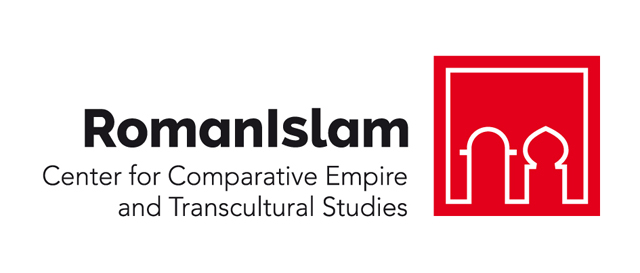Dr. Leticia Tobalina Pulido
October 2020

Research Project: Between the Late Roman Villa and the Medieval Towns. Interdisciplinary Analysis on the Management and Administration of Rural Territories in Times of Change
The region between the Middle Ebro and the Pyrenees was the spatial dimension for the work carried out in our doctoral thesis. We were able to verify the existence of two models of territorial organization. The first one was dated between the 3rd and 4th centuries. At the end of this period, the towns began to lose their importance in favor of other types of centers such as villages, while the Christianization of the urban centers was observed. The figure of the bishop began to gain strength. The importance for the city of the existence of a bishop can also be seen in the fact that the Aragonese cities that remained are those that had an episcopal see, that is to say, they were the most important cities in Roman times and remained to exist as episcopal sees during the Visigothic period. The second one, which we date between the 5th and 7th centuries, is defined by the change of the villae to other typologies in their role as articulators of settlement. The farmhouses, necropolises and churches took on this role. This second model will be the germ of the early medieval population system, in which villages and churches will be the dominant categories.
Based on these results, during our stay at the Romanislam Center we consider this question in greater depth. Do we have any cases of progressive transformation between the Roman and Visigothic models of administration? What role did the episcopal sees play in the organization of the territory? Is there a relationship between the establishment of the medieval churches and the previous villae? Do the centers of power follow a similar pattern of installation at both times?
Profile
Dr. Leticia Tobalina Pulido holds a PhD in Archaeology at the University of Navarra (Spain) and the University of Pau (France) with the thesis: "From the Middle Ebro to the Pyrenees: spatial dynamics during Late Antiquity (3rd-7th century AD). GIS analysis in a context of uncertain archaeological data". She is specialist in databases and spatial analysis applied to Archaeology. Since 2017 she is temporary lecturer at the University of Pau and since 2018 lecturer at the University of Clermont-Auvergne. She has also taught at the University of Navarra (2019) and will be a guest lecturer at that university from January to May 2020. She has coordinated the seminar "Conceptual modelling and the creation of spatial databases in Archaeology and History" (UPPA, 2017) and "Processing data: approaches, methods and information processing" (UPPA, 2019). She has carried out research stays at the University of Santiago de Compostela (2015), the University of Pau (2014-2019) and the Incipit - CSIC (2020). She has worked as research assistant at the University of Clermont-Auvergne (January-July 2018 and February-July 2020). Between 2015 and 2018 she was a researche associate in the POEM project (Échanges et mobilités dans les Pyrénées occidentales et leurs piémonts) at the University of Pau. She is author of various scientific papers in national and international journals and has been awarded several national grants (Centre for the History of Crime in Durango, 2011; Sancho el Sabio Foundation bibliographic research grant, 2014; CRUE Pymes SANTANDER, 2014), as well as several grants for short term missions (Erasmus+, Aquimob, Cost Action SEADA).
CV
Selected Publications
Tobalina Pulido, Leticia (2020a), “Methodological Proposal for the Study of Temporal and Spatial Dynamics During the Late Period Between the Middle Ebro and the Pyrenees”, Information - Special Issue on Digital Humanities 11(7), 366.
Tobalina Pulido, Leticia/ Cabes, Sébastien (2020b), “La place de la uilla dans l’organisation des territoires d’Aquitaine méridionale et d’Hispanie septentrionale dans l’Antiquité tardive (IIIe-VIIe s.): Approche transfrontalière”, Studies on the Rural Word in the Roman Period, 11.
Tobalina Pulido, Leticia (2019), “Un dolium en el contexto 21 de Arriaca-El Tesoro”, Practicum de Cerámica Romana Tardía Arriaca, 94-97.
Tobalina Pulido, Leticia/ Pace, Benoît/ Campo, Alain (2018a), “The Contribution of GIS to the Analysis of the Distribution of Roman Caves Between the Ebro River and the Pyrenees”, Archaeology and Geomatics. Harvesting 10 years of training in the Iberian Peninsula (2006-2015), Leiden: Sidestone Press, 191- 207.
Tobalina Pulido, Leticia (2018b), “Arqueología del cristianismo de la antigüedad tardía en Cantabria: hacia un estado de la cuestión)”, Sautuola : Revista del Instituto de Prehistoria y Arqueología Sautuola, 16-17, 2010-2012, Spain: Santander, 241-262.
Tobalina Pulido, Leticia (2017), “Cambios y transformaciones entre el Ebro Medio y los Pirineos en la Antigüedad Tardía: ¿decadencia de lo urbano y afianzamiento de lo rural?”, in: 'Oppida labentia': transformaciones, cambios y alteración en las ciudades hispanorromanas entre el siglo II y la tardoantigüedad, Fundación Los Bañales, Uncastillo, 375-408.
Tobalina Pulido, Leticia/ Campo, Alain/ Dumenil, Vincent (2015), “Fréquentations des grottes durant l'époque romaine: le cas de la Navarre”, Cuadernos de Arqueología de la Universidad de Navarra, 23, 123-161. https://doi.org/10.15581/012.23.123-161


